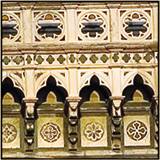Chapter4.Composition
|
|
Chapter 4. CompositionThis just might be the most important chapter in this book. The fact is, if you don't have solid composition skills, you have little chance of making artistic images that have impact. Exposure and focus are important technical skills, but composition frames reality and structures the viewing experience. Without effective composition, you're left with a detached and soulless view of the world, even if it is clearly exposed and presented. This chapter presses you to define and refine your message; asking what you're trying to express with your images while acknowledging that not everyone has the same motives and aspirations. Some of you are aiming for artistic expression, while others are simply out to show the relatives that you really were in that famous or exotic place. It's all valid, although your approach to composition will vary accordingly in each of these instances. In addition to examining intentions and ideas, this chapter considers the various compositional building blocks, including color, the rule of thirds, cropping, and depth of field. Finally, we examine a method for controlling composition using multiple exposures to optimize sharpness and exposure, as well as to create dramatic lighting effects.
Composition and Style When you take a picture, you reveal a great deal about yourself as well as the world around you. First and foremost, you reveal the things that are important to you based on your choice of subject. Some folks shoot landscapes while others shoot people or abstract images. The things that draw your attention and create the impulse to capture them tell a lot about how you see the world. They're what define your photographic style. In addition, your approach to your subject is telling. Do you use a wide lens and keep a distance from the subject, or do you push in close and provide a more intimate view? Finally, what are your personal feelings about the scene in front of you? Do you have an emotional or passionate reaction to the subject, do you want to push the aesthetic elements and create an artistic message, or do you simply want to capture and preserve the face of someone you love? Your answer to these questions should be your guide to how you approach image composition. Whatever your motivation, don't forget that it's all about telling a story about what you see as well as what you feel. |
|
|
EAN: 2147483647
Pages: 141

